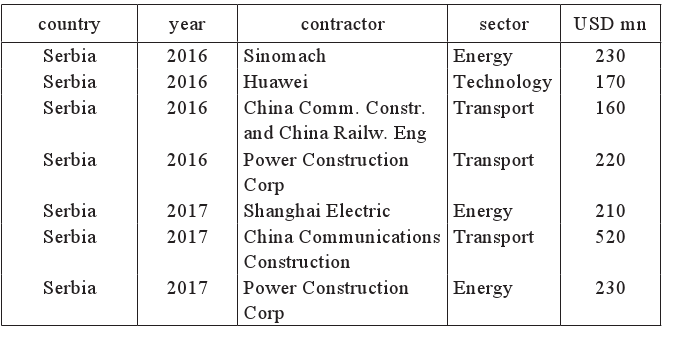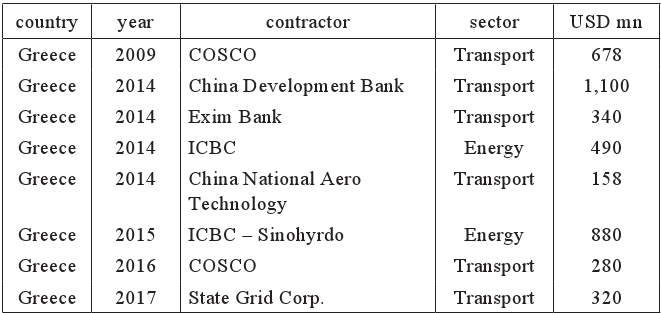
Полная версия
Регионы в современном мире: глобализация и Азия. Зарубежное регионоведение
Таким образом, во втором разделе монографии представлен спектр результатов научно-исследовательской деятельности отечественных и зарубежных лингвистов, филологов, литературоведов, культурологов, искусствоведов и педагогов, различающихся методологической базой, исследовательскими технологиями и концептуально-понятийным аппаратом, но при этом сходных в стремлении дешифровать культурные коды Азии и познать глубинные механизмы их проявления в современном глобальном информационно-коммуникативном пространстве.
В. В. Малявин, О. А. Нестерова1. Китайский проект глобализации
Растущее влияние Китая на Балканах: вызовы и перспективы
Появление Китая как участника региональной политики на Балканах – совершенно новое явление. Влияние Китая и в экономике, и в политике неуклонно растет, и были предприняты взаимные шаги для укрепления военного сотрудничества. Китайские компании стали важнейшими инвесторами, от которых зависит экономическое развитие в регионе, китайские банки финансируют крупные инфраструктурные проекты в регионе. Заметным стало и присутствие Китая в культурной политике, появились центры научного сотрудничества. Учитывая, что ЕС и НАТО считают Китай геополитическим противником, нет сомнения, что они используют институциональные механизмы и экономическое давление для сдерживания Китая на Балканах. Но в свете итогов сотрудничества между Китаем и балканскими странами у этого формата есть перспективы. Тем не менее в будущем это сотрудничество ждут серьезные испытания.
Ключевые слова: Китай, Балканы, Западные Балканы, китайское влияние, ЕС, НАТО.
CHINA’S GROWING INFLUENCE IN THE BALKANS: CHALLENGES AND PERSPECTIVESDUŠAN PROROKOVIĆHead of the Center for Eurasian Studies at the Institute of International Politics and Economics, Associate Professor, Faculty for Diplomacy and Security, Belgrade, Serbiadusan@diplomacy.bg.ac.rsThe emergence of China as a regional policy actor in the Balkans is a completely new phenomenon. China’s influence has been growing, both in economy and in politics, and initial steps have been taken to improve military relations. To date, Chinese companies have become indispensable investors, on which economic growth in the region depends, and banks are important lenders that finance the construction of some of the most important infrastructure projects. The offensive of Chinese institutions in the field of cultural diplomacy is also visible, with the expansion of scientific cooperation with research centers in the Balkans. Given that the EU and NATO have recognized China as a geopolitical challenger and Chinfluence as a threat, it is undoubted that they will use institutional mechanisms and economic leverage to attempt to limit or squeeze China out of the Balkans. From the perspective of the ten-year development of relations between China and the Balkan countries, this format has a perspective. At the same time, looking at the long-term interests of the EU and NATO, there are many challenges ahead.
Keywords: China, Balkans, Western Balkans, Chinfluence, EU, NATO.
Introduction
The emergence of China as a regional policy actor in the Balkans is a completely new phenomenon. Namely, from 1958 to 1978, China established special ties with Albania. China returned to this region 30 years later. Since 2009, China’s influence has been growing, both in economy and in politics.
The growth of Chinese influence in the Balkans has been recorded since the implementation of the ambitious Belt and Road Initiative (BRI). Intensified political contacts and first investments emerged in 2009, at the stage when the BRI was being prepared. Since 2013, we have been witnessing a kind of “eruption” [Dimitrijević, Ping, 2017].
The Balkan Peninsula is an integral part of the European (Maritime) Route. Chinese Premier Li Keqiang “described the port of Piraeus as a pearl in the Mediterranean Sea and said it could become one of the most competitive ports of the world”1. Also, the Balkans is well connected (transport and economic ties) with Western Turkey (CAWA route) and Central Europe (NELB).
As a result, in September 2019, a direct railway connection was established via NELB from Jinan (Shandong Province) to Belgrade (Serbia)2. In this context, the initiative to modernize the Belgrade–Budapest railway should also be considered. In 2014 governments of China, Serbia, Hungary and Macedonia signed an agreement on the modernization of railroad traffic with the intention to extend the Budapest-Belgrade railway to the south towards Macedonia and Greece through a North-South vertical. Thus, the new transport corridor would connect the port in Piraeus and the most important traffic junctions of Central Europe, which are part of the NELB.
Тhe CEE (Central – Eastern Europe) region “is attractive to China thanks to its strategic geographical position for the New Silk Road project, its high-skilled yet cheap labour, and its open trade and investment environment.” [Stanzel, 2016. P. 1].
Тable 1: Land and Maritime routes – Belt and Road Initiative3


Table 2: Chinese firms’ major construction contracts in the Western Balkans, 2010–2017 [Holzner, Schwarzhappel, 2018. P. 17]


The number of major Chinese projects contracted in the Western Balkans (shown in Table 2) “since the outbreak of the global financial crisis is non-negligible. Overall, Chinese infrastructure projects make up about USD 9.1 billion (EUR 7.8 billion). Almost 90% of these, however, have been initiated only since 2013. The most important transport sector contractor is the predominantly state-owned China Communications Construction Company. In the energy sector, the state-owned China National Machinery Industry Corporation – known as Sinomach – is the leading contractor. Geographically, the prime target of Chinese construction contracts is Serbia.” [Holzner, Schwarzhappel, 2018. P. 17]. The increased interest of Chinese investors and banks in investing in Greece is also evident (shown in Table 3).
In Bulgaria „In the realm of infrastructure, the China Machinery Engineering Corporation (CMEC) signed in 2019 a €120 million contract with the joint stock company Logistical Center-Varna for the joint development of port infrastructure in Bulgaria’s largest seaside city of Varna. This is the first project of its kind that Beijing is going to realize in Bulgaria and is part of the Belt and Road Initiative. China has also made a major investment in innovative Bulgarian business. The China-CESEE Investment Corporation Fund (a $500 million private equity fund launched in 2014 through financing provided by the Exim Bank of China) acquired a 10% share in Walltopia – a world leading Bulgarian manufacturer and installer of mounting walls. Moreover, the China National Nuclear Corporation (CNNC) has expressed interest in the construction of the Belene nuclear power plant in cooperation with Russia’s Rosatom.”4 Chinese companies are also increasingly present in Romania: „The Dutch multinational company Nidera, the largest trader in commodities for agricultural markets with operations in Romania, which was taken over in 2017 by COFCO, China; The American company Smithfield Foods, a global leader in pig farms and pork production, with a branch in Romania that manages 46 farms in the counties of Timi and Arad, which was taken over in 2013 by Shuanghui International, in the largest ever Chinese acquisition of an American company (over USD 7 billion); The famous Italian tyre maker, the world’s fifth largest, Pirelli, which was taken over in 2015 by the Chinese state conglomerate ChemChina in a USD 7.7 billion deal, including two factories in Romania”. [Pencea, 2017. P. 24]. Curiosity is the fact that China’s most modest activities have been detected in Albania. „In 2016 China’s Everbright Group bought Tirana’s Nënë Tereza International Airport Company and it has a concession on the airport until 2027. The aim is to set up a logistics centre to transport Chinese goods into Europe and to promote tourism in Albania, especially tourists from China“5.
Of course, some authors are right to state that „these projects are not FDI, but mostly public investment contracts financed by Chinese banks; not all the projects might be realised.“ [Holzner, Schwarzhappel, 2018. P. 17]. So the data presented in Tables 2. and 3. can also be deceiving.
Several major projects announced in Bulgaria and Romania have failed or have been delayed.6
Table 3: Major Chinese Investments in Greece 2009–2017. [Bastian, 2017. Р. 10]

In Romania “The Cernavodă Nuclear Power Plant is one of the most important Romanian – Chinese projects that have not been implemented. Because of the quick succession of Romanian governments, the negotiations were delayed for more than two years. /…/ The project was estimated to cost around 6.4 billion euro (8 billion dollars).” [Popescu, Brînză, 2018. P. 32]. A preliminary investors’ agreement has been signed in May 2019, but now, after five years of negotiations, a new problem has arisen: “The fact that the Chinese partner is under US sanctions would make this subject very politically sensitive for Nuclearelectrica“7.
In the case of Bulgaria and Romania, the reasons for the relative failure should also be sought in the EU’s membership of the two countries. „As an EU Member State Bulgaria has an access to the EU Structural Funds which provide partial grants and this makes Chinese loans less attractive.“ [Zhelev, 2018. P. 12]
However, despite some failures, it should be emphasized that China’s presence in the Balkan economies has been expanding since 2009, and especially since the launch of the BRI in 2013. Everything the Chinese have accomplished has been done in just 5–10 years.
1. Western Powers vs Chinfluence
The rapid spread of Chinese influence in the Balkans has caused both EU and US reactions. European Commissioner for Enlargement Johannes Hahn warned of the role of China in the Western Balkans and the possibility that Beijing will transform the region’s countries into Trojan horses that will one day be members of the EU8.
„The German Foreign Minister Sigmar Gabriel appealed to EU members to pursue a common foreign policy vis-à-vis China to counter Beijing’s tactics: If we do not succeed, for example, in developing a single strategy towards China, then China will succeed and dividing Europe, he said. China is increasingly anticipated by the EU as a threat.“ [Prorokovic, 2017. P. 9]. For US analysts, the Chinese approach is clear, and therefore very problematic: „Interestingly, a comparison could be made with the United States between the two world wars and China’s promotion of the MSRI (Maritime Silk Road Initiative, as a part of BRI, remark by D. P.).“ [Blanchard, Flint, 2017. P. 235].
To a certain extent, it is unbelievable that Chinese influence is growing despite the fact that most Balkan countries are in the EU and/or NATO. The analysis of Slovenian IFIMES offers a simple explanation of this phenomenon: “European leaders have often confirmed their support to the Western Balkans and its Euro Atlantic road, expressing at the same time concerns about the impact of individual states in the region, particularly Russia, China and Turkey. The EU with its enlargement stalemate practically pushes the Western Balkans counters to Russian hug, to blame in the end those countries for their close relations and cooperation with Russia. However, some EU states always set new requirements and membership criteria for the Western Balkans. Some experts have been pointing out that 15 EU member countries would not be able to fully meet the membership criteria now, which are required from the Western Balkans countries.”9
In addition, the hypocrisy or double standards of both – the EU institutions and key European countries are often visible. Germany, for example, strongly insisted on the implementation of the Third Energy Package, which essentially meant stopping the construction of the South Stream gas pipeline across the territories of Bulgaria, Serbia and Hungary10. But at the same time, it continued to build the North Stream and the EU did not even try to prevent it. [Proroković, 2018. P. 702].
Similar is the case with NATO, which is a key instrument in securing the US position in the Balkans. The US aggressive policy is based on the securitization of the Russian issue as well as the new attitude of the Donald Trump administration towards acute crises in the Middle East. In this context, the Balkan NATO members are forced to following the US, establishing a restrictive policy towards Russia and supporting Washington’s initiatives in the Middle East, which is not usually in their national interest. [Proroković, 2018a. P. 86–87].
2. Conclusion: Perspectives and Challenges
In contrast to the Western powers, which show a deficit of “optimistic initiatives” or constantly make political demands, the Chinese approach is different. China presents itself as an ambitious and constructive partner. And more importantly for “Balkan Stabilitocracies”, it does not require any political concessions11. This is probably the reason for China’s great success. China is firmly committed to realizing the geo-economic goals of the BRI and is taking a number of initiatives in the Balkans. To some extent, it is even noticeable that „the number and intensity of China’s economic and political initiatives in the Balkans since 2013 are utterly disproportionate to the size of the markets and the foreign trade importance of these countries to China.” [Proroković, 2016. P. 54–55]. Therefore, it can be concluded that China is projecting the pace and scope of its presence in the region. China has become a serious challenger to the US and EU in the Balkans. Therefore, China is an actor who will become more involved in regional political and security issues in the future.
However, the West’s advantage in the Balkans is characterized by its deep institutional presence (EU and/or NATO membership) and widespread economic ties (which are completely disproportionate, so that the export of the Balkan countries is predominantly EU oriented). Given that the EU and NATO have recognized China as a geopolitical challenger and Chinfluence as a threat, it is undoubted that they will use institutional mechanisms and economic leverage to attempt to limit or squeeze China out of the Balkans.
From the perspective of the ten-year development of relations between China and the Balkan countries, this format has a perspective. At the same time, looking at the long-term interests of the EU and NATO, there are many challenges ahead.
References
Bastian J. The potential for growth through Chinese infrastructure investments in Central and South-Eastern Europe along the ʼBalkan Silk Roadʼ. Athens // London: Report prepared by Dr Jens Bastian for the European Bank for Reconstruction and Development (with funding from the Central European Initiative), July 2017. P. 62. (in English)
Blanchard Jean-Marc F. and Colin F. The Geopolitics of China’s Maritime Silk RoadInitiative // Geopolitics, 2017. 22 (2), 2017. Р. 223–245. (in English)
Dimitrijevíc D. and Huang Ping (Eds.). Initiatives of the ‘New Silk Road’ – Achievements and Challenges. Belgrade: Institute of International Politics and Economics, 2017. P. 529. (in English)
Ghiasy R. and Fei Su, Saalman L. The 21 st Century Maritime Silk Road: Security implications and ways forward for the European Union. Stockholm: Stockholm International Peace Research Institute – Friedrich Ebert Stiftung, 2018. P. 63. (in English)
Holzner M. and Schwarzhappel M. Infrastructure Investment in the Western Balkans, Luxembourg: European Investment Bank – Wiener Institut für Internationale Wirtschaftsvergleiche, 2018. P. 38. (in English)
Pencea S. Romania-China Trade and Investment Relations Against the Backdrop of ʼOne Belt, One Roadʼ Strategy // Romanian Economic and Business Review, 2017. Vol. 12, number 2. Р. 17–28. (in English)
Popescu L. and Brînză A. Romania-China Relations. Political and Economic Challenges in the BRI Era // Romanian Journal of European Affairs, 2018. 18 (2). Р. 20–39. (in English)
Prorokovic D. China – CEE relations need new strategies // China Daily, November 27. 2017. Р. 9. (in English)
Prorokovíc D. Geoekonomski aspekti kineske koncepcije OBOR i pozicija Srbije, Crne Gore i BiH // Nacionalni interes, 2016. XII (26), 2/2016. Р. 35–58. (in Serbian)
Prorokovíc D. Od Soluna do Sofije: zašto je slabio uticaj EU na Zapadnom Balkanu? In: Dragan Simić, Dejan Milenković, Dragan Živojinović (Eds.). Evropa za mene. Beograd: Fakultet političkih nauka – Univerzitet u Beogradu, 2018. Р. 693–702. (in Serbian)
Prorokovíc D. Pogled na Srbiju iz okvira evroatlantizma kao geopolitičkog koncepta: zašto srpski interesi nisu podudarni sa američkim ciljevima? // Politika nacionalne bezbednosti, 2018a. IX (14), 1/2018. P. 73–88. (in Serbian)
Ramasamy B. and Yeung M., Utoktham C., Duval Y. Trade and trade facilitation along the Belt and Road Initiative corridors // Working Paper Series, No. 172, Asia – Pacific Research and Training Network on Trade – UN Economic and Social Commission for Asia and the Pacific, Bangkok, 2017. Р. 9–22. (in English)
Stanzel A. Chinaʼs Investment in Influence: the future of 16 + 1 cooperation // China Analysis, Brussels: European Council on Foreign relations. 2016. P. 16. (in English)
Zhelev P. Bulgarian – Chinese economic relations in the context of 16+1 Cooperation // China – CEE Institute, 2018. Working paper No. 28. Р. 12–14. (in English)
Китайско-германские отношения в рамках инициативы «Один пояс, один путь»
Данная статья посвящена анализу перспектив китайско-германского сотрудничества в рамках инициативы «Один пояс, один путь». Автор подчеркивает, что данная инициатива поможет укрепить глобальный характер двусторонних отношений, а также укрепить сотрудничество в финансовом секторе. Реализация инициативы «Один пояс, один путь» позволит Китаю и Германии сотрудничать в целях содействия стабильности и процветанию стран, расположенных вдоль Шелкового пути, таких как страны Центральной Азии. Инициатива способна объединить культуры и народы стран, расположенных вдоль Шелкового пути. Кроме того, к Шелковому пути примыкают нестабильные регионы, такие как Ближний Восток и Африка. Принимая во внимание, что Европа, и в частности Германия, страдает от притока мигрантов, Китай и Германия заинтересованы в достижении стабильности в регионе. В настоящее время существуют прямые грузовые рейсы между городами Германии и Китая, такими как Чунцин–Дуйсбург, Чжэнчжоу–Гамбург, Шэньян–Лейпциг, Пекин–Нюрнберг. Подчеркнуто, что Германия также поддерживает и принимает активное участие в строительстве Азиатского банка инфраструктурных инвестиций.
Ключевые слова: Китай, Германия, международные отношения, мировая политика, «Один пояс, один путь».
SINO-GERMAN COOPERATION UNDER THE FRAMEWORK OF THE «ONE BELT, ONE ROAD» INITIATIVEGALIMZYANOVA ALBINA KARIMOVNALecturer, Department of Oriental Languages, Diplomatic Academy of the Russian Ministry of Foreign AffairsGalaktika735@mail.ruSino-German cooperation under the framework of the «One Belt, One Road» initiative can strengthen the global nature of bilateral relations, set in motion the process of bilateral trade and investments, cooperation in third country markets, as well as strengthen cooperation in the financial sector. This will benefit not only Chinese companies, European goods, services and the financial sector will also be able to develop new markets.
The implementation of the «One Belt, One Road» initiative will allow China and Germany to cooperate in order to promote the stability and prosperity of countries alongside the Silk Road Route, such as the countries of Central Asia. The initiative is able to unite the cultures and peoples of the Silk Road countries.
In addition, unstable regions such as the Middle East and Africa also adjoin the Silk Road. Taking into account that Europe, and Germany in particular, is suffering from an influxes of migrants and refugees from Syria, China and Germany are interested in achieving stability and development in the region.
Currently, there are direct freight trains between the following German and Chinese cities, such as Chongqing–Duisburg, Zhengzhou–Hamburg, Shenyang– Leipzig, Beijing–Nuremberg. The China–Europe Express runs from Shilong railway station, Guangdong province to Duisburg. Germany also supports and takes an active part in the construction of the «Asian infrastructure investment Bank».
Keywords: China, Germany, international relations, foreign policy, “One Belt, One Road” initiative.
Инициатива «Один пояс, один путь», выдвинутая председателем КНР Си Цзиньпином в сентябре 2013 года во время государственного визита в Казахстан, направлена на развитие новых транспортных путей и торгово-экономических коридоров. Основу китайской инициативы «Один пояс, один путь» составляют «пять коммуникаций»: взаимосвязанная инфраструктура, беспрепятственная торговля, финансирование капитала, политическая коммуникация и связь между народами, которые основаны на принципе взаимного сотрудничества, совместного строительства и общедоступности и характеризуются открытостью и терпимостью [Кэлинь Фулиньтэ, Чжан Сяотун, 2016年,第1–24页]. Проект призван объединить страны Европы и Центральной Азии, а также страны Африки во имя мира, открытости, сотрудничества и всеобщего выигрыша.
Китайско-германские отношения переживают лучший период развития в истории. Страны установили отношения всеобъемлющего стратегического партнерства, и двустороннее сотрудничество все крепнет. Германия также играет ведущую роль и в отношениях Китая с Европейским союзом [Чжэн Чуньжун, 2015. С. 1–14].
После того как Китай выдвинул инициативу «Один пояс, один путь», европейские ученые начали изучать ее возможное влияние на Европу [Casarini, 2016. P. 1–14]. Большое внимание данной инициативе было уделено и со стороны правительства Германии. Это связано не только с вышеупомянутым высоким положением Германии в ЕС и с высоким уровнем китайско-германских отношений, но и обусловлено историческими и географическими причинами. Впервые представление и понятие о Великом Шелковом пути было предложено немецким геологом, географом и путешественником бароном Фердинандом фон Рихтгофеном (1833–1905). Согласно его концепции, Китай и Германия расположены на двух концах экономического пояса Великого Шелкового пути и являются двумя основными экономическими системами и полюсами роста Европы и Азии. Ожидается, что вместе эти две страны разовьются в два крупнейших межотраслевых рынка Евразии. В поисках ответа на вопрос о потенциале инициативы «Один пояс, один путь» для развития китайско-германских отношений обратимся к более детальному рассмотрению скрытого потенциала инициативы.
Среди стран Европы одним из активных сторонников инициативы является Германия. Правительство ФРГ активно поддерживает и принимает участие в инициативе «Один пояс, один путь» главным образом потому, что немецкая сторона видит колоссальный потенциал инициативы, направленный на развитие китайско-германских отношений. Китайско-германское сотрудничество в рамках инициативы «Один пояс, один путь» способно усилить глобальный характер двусторонних отношений, привести в движение двусторонние торгово-экономические инвестиции, а также укрепить сотрудничество в финансовом секторе.











